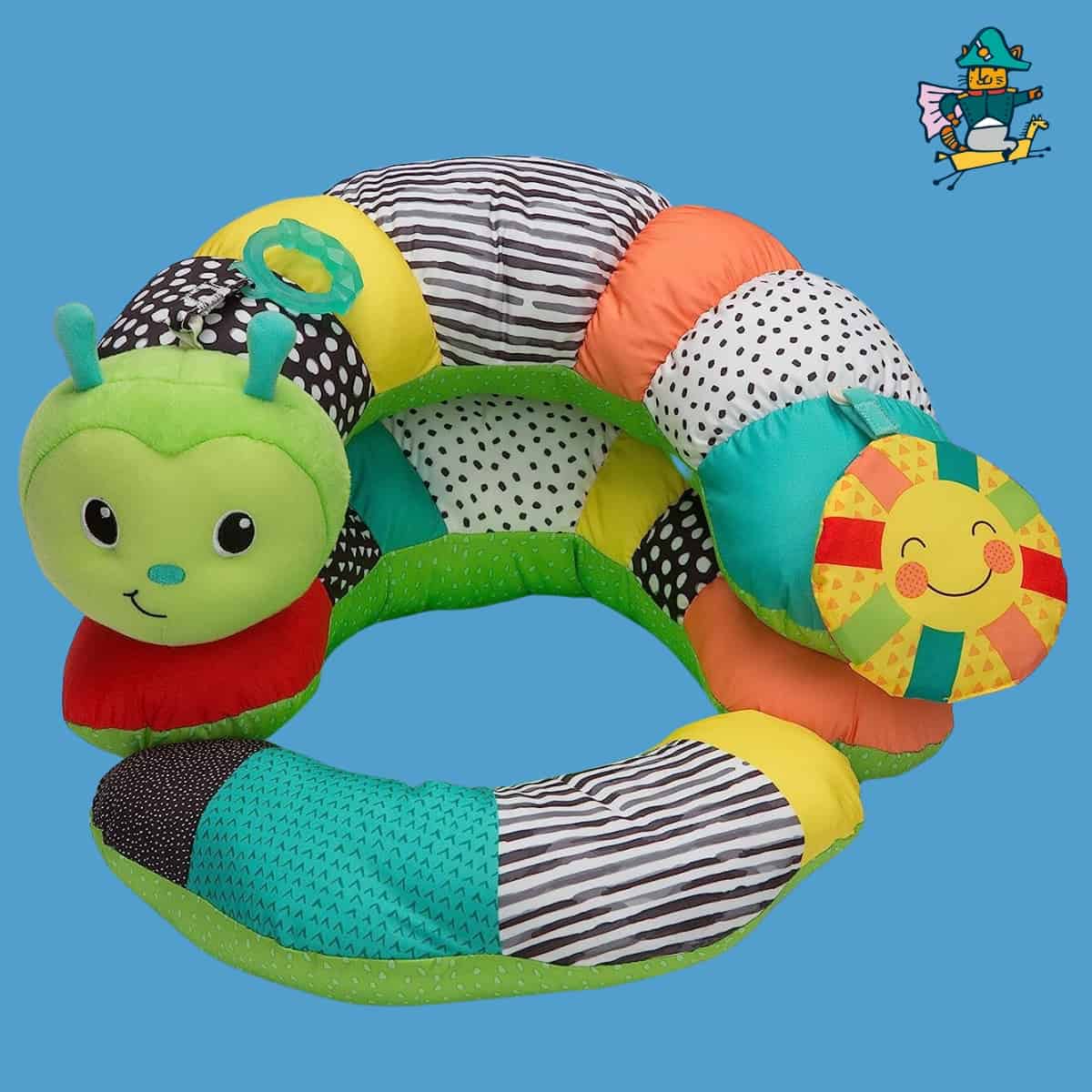Best toys to encourage your baby to sit

Always something to do for the holidays or rainy day?
Play Choice now has the ultimate activity book collection, with over 60 pages of fun coloring pages and educational puzzles.
Sitting independently gives you baby a new perspective on the world.
Once his back and neck muscles are strong enough to keep him upright and he knows where to put his legs so he doesn't fall over, it's only a matter of time until he continues to crawl, stand and walk.
In this article everything about when you baby sits down and tips for you to give him a helping hand.

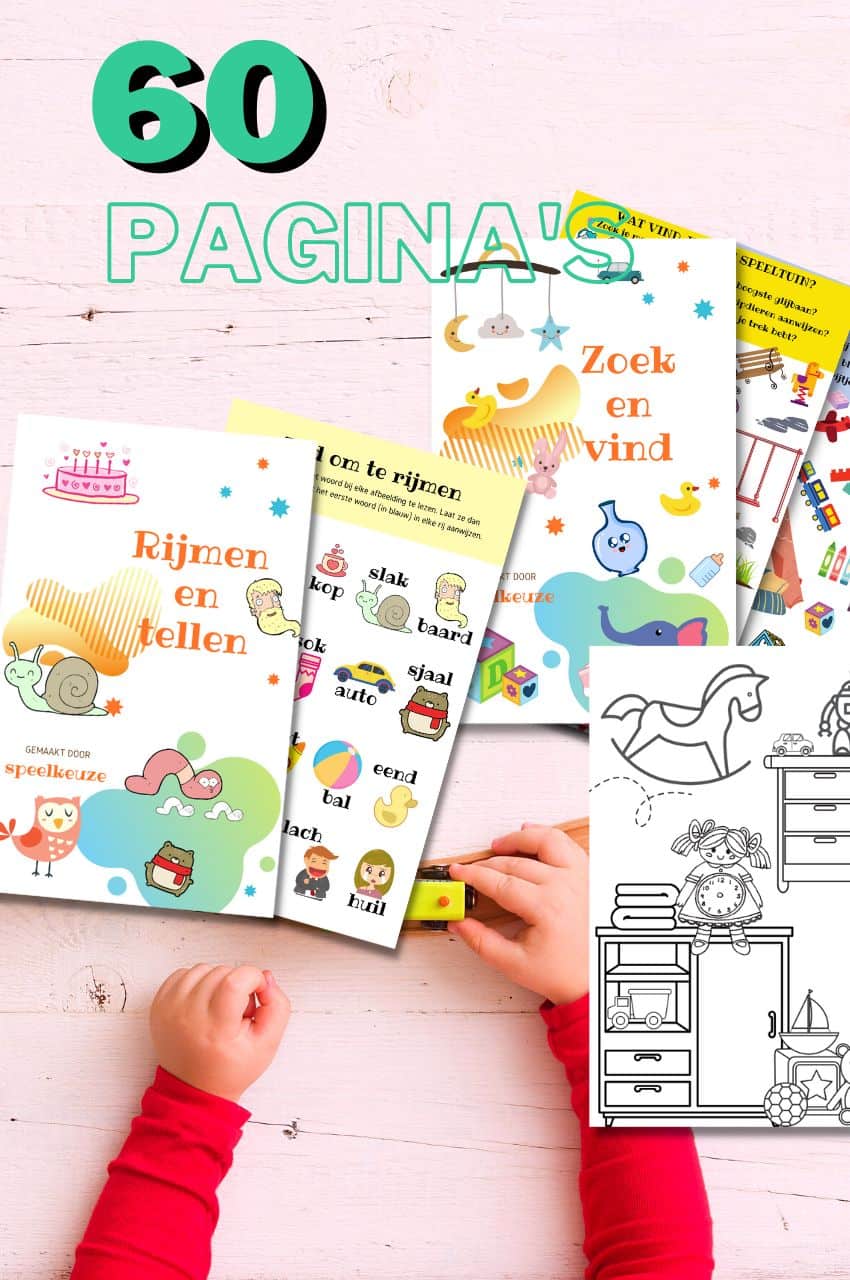
From toddler to toddler activity book collection
Educational games and coloring pages for 3 to 6 years
Your toddler and preschooler will love this e-book, along with the accompanying printables. He or she can play with it at every stage of development, together with mom and dad.
Buy at Bol.comWhat we discuss in this comprehensive post:
- 1 At what age do babies sit up?
- 2 How can you playfully teach your baby to sit upright?
- 3 Best Toys & Seats to help you sit
- 3.1 Infantino Prop-A-Pillar
- 3.2 Best Classic Floor Seat To Help Babies Sit: Bumbo Floorseat
- 3.3 Most versatile article to help babies sit: Snoozzz nursing pillow
- 3.4 Best toys to help baby sit: Vtech Baby Animal Friends Ferris Wheel
- 3.5 Best play wheel to help baby sit: Vtech Baby my first steering wheel
- 3.6 Best booster seat to help baby sit: Infantino Discovery booster seat
- 3.7 Best seat on the floor: Fisher-Price Sit-Me-Up floor chair with tray
- 4 Are sit-up toys the first baby toy you should buy?
- 5 What to do if your baby doesn't sit up
- 6 After your baby is sitting up - what's next?
At what age do babies sit up?
Je baby will likely learn to sit independently between the ages of 4 and 7 months.
Je baby will pick it up after mastering rolling over and holding its head up.
Most babies can sit comfortably for several minutes without support by the time they are 8 months old (even babies who have mastered sitting will eventually fall over, often because they lose interest in sitting upright).
How can you playfully teach your baby to sit upright?
Although you baby In a sitting position almost from day one, true independent sitting doesn't begin until he gains head control.
From about 4 months, the neck and head muscles become yours baby quickly becomes stronger and learns to hold his head up while lying on his stomach.
Then he will figure out how to put himself on his arms and keep his chest off the ground, sort of a mini pushup.
By 5 months, he may be able to sit unaided for a while, although you should stay close to support him and surround him with cushions to catch a possible fall.
Zappy Parents also has a nice video about it:
Learn how to get your baby ready to reach an important developmental milestone: sitting up.
Soon you will baby figure out how to maintain balance while sitting by leaning forward on one or both arms in a tripod position.
After 7 months, he will likely be able to sit unsupported (freeing up his hands to explore), learning how to turn to reach a desired object while seated.
At this point, he can even get into a sitting position from his stomach by pushing on his arms.
By the time he's 8 months old, he'll probably be fine without support.
How to help your baby sit up
Lifting his head and chest will help you baby strengthens his neck muscles and develops the head control necessary to sit upright.
You can help by encouraging him to play face down on the floor and then asking him to look up.
Using a clear toy that makes noise or a mirror is also a good way to make sure his hearing and vision are on the right track.
Once you baby is a reasonably confident sitter, place your toys and other intriguing objects just out of reach – they will keep his attention while he learns to balance with his arms.
As always, and especially when he is just learning to sit, you need to be close baby stay in case he falls – or wants to show off his new skills.
Best Toys & Seats to help you sit
After months of sitting back, your little one will be all too excited about a change of position (look at me, mom!).
Sitting upright gives him a comprehensive view of the world and a chance to discover amazing things that inhabit his expanding universe.
Most babies will be able to sit with help for between 3 and 5 months, either by supporting themselves on their hands or with a little support from you.
the more you baby practices with help, the more likely he is to try on his own without a pillow or mom or dad's hands to support him.
A seat on the floor can be an excellent solution for you and your baby.
Floor seats support the baby so he can play or take a different position.
And, best of all, they keep it stable, so you can do things like answer a few emails while keeping an eye on it.
When it comes to a seat on the floor, here are some options to look for:
- Solid structure: it must hold the baby tightly.
- Easy to cleanYou want one that's easy to wipe clean or with a pillow that can be thrown in the washing machine for quick cleaning.
- Extra fun: some floor chairs have toys attached. These can help keep the baby occupied for those precious few minutes longer.
- Versatility: some are growable and can be used as a newborn chair or converted into a booster seat.
Only use the floor chair on the floor!
It is possible that a finicky or extra tortuous one baby can knock over a ground chair, putting it at risk of falling if you place it on the table, for example.
Attempted baby Don't keep it on the ground for more than 15 minutes, it's good to practice a little and get some security but not for the long term.
Because the positioning can be a bit restrictive, these chairs allow the natural movements of the baby limit, the same movements needed to build the muscle strength that the baby needs to sit up independently.
Just like a baby walker when learning to walk.
Stay close to you baby while sitting on the ground.
In addition to floor seats, there are plenty of other fun devices to use baby learn to sit independently. View our favorite products below.
Infantino Prop-A-Pillar
- Convenient 2-in-1 design for tummy time and learning to sit
- Colorful design appeals to the imagination
- Not very durable
-
From: 0 months
-
Best: 0 – 12 months
-
Up to: 2 years
- Material: Polyester
- Number of parts: 3
- Dimensions: 41,91 x 12,7 x 35,56 cm (16.5 x 5 x 14 inches)
- Price at time of writing: €59,95 – $44,99
- Durability: None
- Theme: Baby toys, Cuddly toy
- Washable: Hand wash
- Safety parts: Soft material
- Playing Time: Longer (10 – 30 min)
- Learning objective: Physical development, Gross motor skills
- Shape this friendly caterpillar like the letter “S” for assisted tummy time to help the baby develop his head and neck muscles,
- and then curl it up to a “C” to support the baby when it is ready to sit.
It also comes with two detachable toys. Very convenient to use due to its multi-functional shape and the colors and theme really appeal to the imagination. This way it can last a little longer into toddlerhood.
Best Classic Floor Seat To Help Babies Sit: Bumbo Floorseat

You can find this chair on many baby registry. Why?
It is designed to... baby to help him sit up before he can do it himself and the contoured design encourages him to maintain good posture.
Plus, it's non-slip and easy to wipe, plus you have lots of great seat covers for it so you can keep it clean with ease.
Most versatile article to help babies sit: Snoozzz nursing pillow

You may already have one for feeding, but a sturdy nursing pillow is also a very useful and safe tool for your baby baby to help sit down.
A nursing pillow is also an aid for tummy time and a pillow for babies working on their sedentary muscles.
The pillow gently supports your little one and prevents him from falling over, so choose a firm one like this one from Snoozzz.
Best learning table for baby to help sit: Fisher-Price Laugh and learn around town Learning table
Best toys to help baby sit: Vtech Baby Animal Friends Ferris Wheel
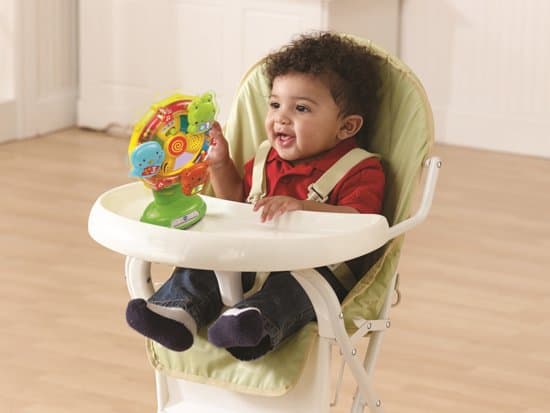
A bright toy that can stand firmly on any smooth, flat surface with the help of a strong suction cup.
It not only gets his attention and occupies him, but also stays put when he works on his hand-eye coordination by reaching, pulling and striking.
The Vtech Ferris wheel has colorful animals stuck in it, making the... baby can connect sound to sight and texture points to encourage his tactile exploration.
Check the most current prices and availability here
Best play wheel to help baby sit: Vtech Baby my first steering wheel
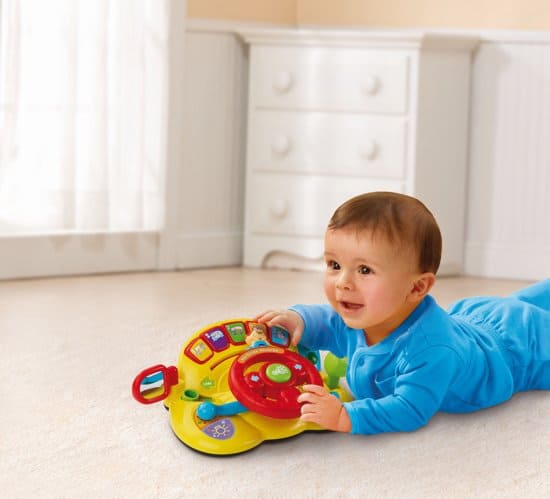
Something nice and low where you baby can grab while he practices sitting.
Your little one will love to sit while playing with this activity-packed steering wheel that he can turn to move the adorable puppy back and forth.
It features a gearshift and signal lever that activates lights and activates fun melodies.
When not in driving mode, the car-inspired toy also includes an animal and music mode, with over 60 songs, sounds and phrases.
Best booster seat to help baby sit: Infantino Discovery booster seat
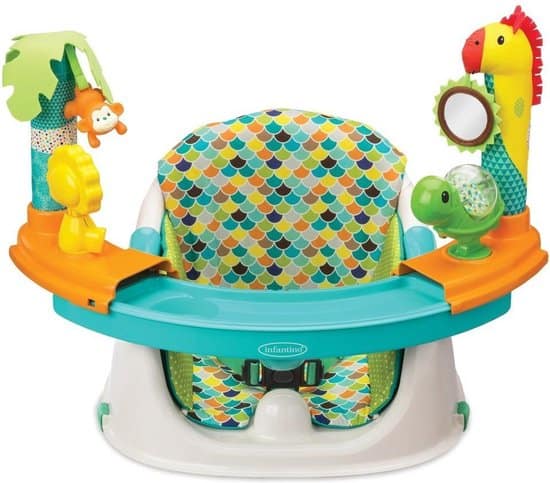
If you're the type of parent who would rather invest in baby products that can be used in more than one way (aren't we all?), You'll appreciate that this seated positioner can be used as a floor seat or booster seat.
The removable tray holds four sensory toys - and they're attached, so you never have to worry about them falling to the floor.
View the lowest prices here at bol.com
Best seat on the floor: Fisher-Price Sit-Me-Up floor chair with tray
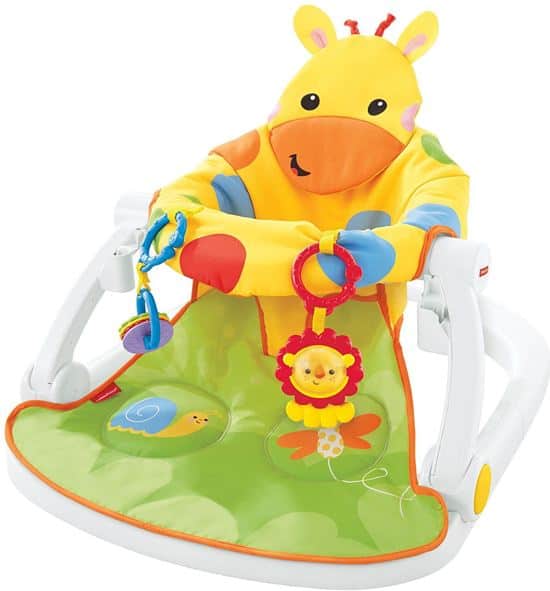
The colorful cheerful giraffe holds up your little one so that he can get a different view of the world around him.
He can play with the rattles and rattle on removable links, make the lion squeak when he kicks his foot and place other toys or books on the removable tray.
The seat is removable and machine washable and the whole thing folds up for easy storage.
Are sit-up toys the first baby toy you should buy?
No, sit-up toys are usually not the first baby toy you should buy. In a baby's first months of life, toys and activities focus on sensory development, including toys with contrasting colors, textures, sounds and simple shapes.
Mobiles, cuddly toys and play mats with hanging toys can be very stimulating for newborns.
As a baby grows and becomes stronger, sit down toys can be helpful in supporting their development of sitting and balance. This toys are usually designed for babies from about 6 months old.
What to do if your baby doesn't sit up
If you are using baby is unable to hold his head steadily by the time he is about 4 months old and has not started learning to prop himself up on his arms shortly thereafter or is unable to sit unsupported for 9 months, take then contact his doctor.
Babies skills develop differently, some faster than others, but head control is essential for sitting independently and sitting is key to crawling, standing and learning to walk.
Please note that premature babies can reach these and other milestones later than their peers.
After your baby is sitting up - what's next?
You can guess what comes after you baby finds out that he can come forward from a sitting position and balance on his hands and knees.
He can start on all fours as early as 6 or 7 months and creep up at the age of 10 months.
Your child is now both highly mobile and very curious, so child safety is very important.
Besides, most pediatricians recommend waiting until you baby sits with minimal support before starting solid food.

Always something to do for the holidays or rainy day?
Play Choice now has the ultimate activity book collection, with over 60 pages of fun coloring pages and educational puzzles.
Joost Nusselder, the founder of Speelkeuze.nl is a content marketer, father and loves trying out new toys. As a child he came into contact with everything related to games when his mother started the Tinnen Soldaat in Ede. Now he and his team create helpful blog articles to help loyal readers with fun play ideas.
